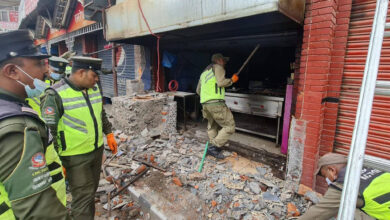His mandate allows him to pursue a reform agenda without constraints; it also allows him to collaborate more deeply with the private sector, while ensuring that there is no crony capitalism, to push growth; and it allows him to focus on improving the economic condition of the poorest Indians.
EDITORIALS Updated: Jun 23, 2019 19:53 IST
Hindustan Times
Narendra Modi has shown that he has the ability to focus and achieve when he puts his mind to something.(PTI Photo)
Prime Minister (PM) Narendra Modi met a range of corporate leaders and economists on Saturday for a conversation convened by the Niti Aayog. With the first budget scheduled for July, this is a part of the larger consultation process the government is having with stakeholders and experts across spheres. The participants gave suggestions to the PM on five distinct, important themes — macro economy and employment; agriculture and water resources; exports; education; and health.
The conversation was a step in the right direction. The government has secured a spectacular political mandate. But this cannot take away from the fact that the economy is in trouble. There is a debate on the methodology used to measure the growth rate — and irrespective of who is right — there is little doubt that gross domestic product (GDP) has dipped. There is pressure on the fiscal numbers. Consumption is down across the board; corporate profits are hit; the banking crisis shows no signs of abating; private investment is low; manufacturing — the only sector capable of generating jobs on a large scale — has not picked up according to the demands of the times. The structural crisis in agriculture persists, with low farmer incomes and a mismatch between the (high) share of population engaged in farming and its (shrinking) contribution to the GDP. India is also fast running out of time to take advantage of its demographic dividend — and the prospect of millions of young people, without productive jobs, should worry policy makers. The government also has to ensure smoother transitions in multiple spheres — from rural to urban, agriculture to industry, and unorganised to organised economy.
There is no easy solution. But Narendra Modi has shown that he has the ability to focus and achieve when he puts his mind to something. The improvement of welfare delivery systems — which enabled the provision of rural housing, toilets, gas cylinders — in his first term is an example of this focus. In the second term though, Mr Modi must invest far more deeply in getting the economy in order. His mandate allows him to pursue a reform agenda without constraints; it also allows him to collaborate more deeply with the private sector, while ensuring that there is no crony capitalism, to push growth; and it allows him to focus on improving the economic condition of the poorest Indians. That is Mr Modi’s biggest test in his second term.
copied from Hindustan Times
The conversation was a step in the right direction. The government has secured a spectacular political mandate. But this cannot take away from the fact that the economy is in trouble. There is a debate on the methodology used to measure the growth rate — and irrespective of who is right — there is little doubt that gross domestic product (GDP) has dipped. There is pressure on the fiscal numbers. Consumption is down across the board; corporate profits are hit; the banking crisis shows no signs of abating; private investment is low; manufacturing — the only sector capable of generating jobs on a large scale — has not picked up according to the demands of the times. The structural crisis in agriculture persists, with low farmer incomes and a mismatch between the (high) share of population engaged in farming and its (shrinking) contribution to the GDP. India is also fast running out of time to take advantage of its demographic dividend — and the prospect of millions of young people, without productive jobs, should worry policy makers. The government also has to ensure smoother transitions in multiple spheres — from rural to urban, agriculture to industry, and unorganised to organised economy.
There is no easy solution. But Narendra Modi has shown that he has the ability to focus and achieve when he puts his mind to something. The improvement of welfare delivery systems — which enabled the provision of rural housing, toilets, gas cylinders — in his first term is an example of this focus. In the second term though, Mr Modi must invest far more deeply in getting the economy in order. His mandate allows him to pursue a reform agenda without constraints; it also allows him to collaborate more deeply with the private sector, while ensuring that there is no crony capitalism, to push growth; and it allows him to focus on improving the economic condition of the poorest Indians. That is Mr Modi’s biggest test in his second term.
copied from Hindustan Times


